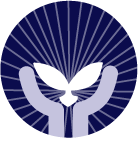Efrain (Pino) Flores Jr.
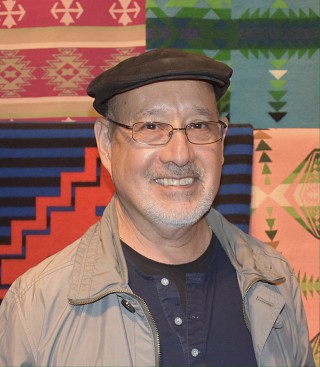
Efrain Flores Jr grew up in South Texas where he graduated with an undergraduate degree in music education/violin. He also attended North Texas University and earned an MLA degree in bilingual education from Southern Methodist University. Efrain’s first teaching position was with the “Success Through Strings” inner city Suzuki program in Dallas, 1973-1979. From 1979-80 he taught at the Suzuki Institute of Dallas, mentored by Evelyn Hermann. Efrain studied at the Talent Education Institute of Matsumoto 1980-1982, graduating in June 1982.
Efrain has had an international career, teaching in Brazil, France, and Chile. After Chile he returned to the Rio Grande Valley in South Texas where he established a private Suzuki violin studio. He was chosen to go with the Tour Group of American and Canadian teachers and students to demonstrate and to teach the Suzuki Method in Brazil, Uruguay, and Argentina in 1986. Efrain was also a high school assistant orchestra director for 22 years in Edinburg, Texas.
Although retired from the orchestra teaching, Efrain continues with a reduced private studio and spends his time performing with the Winter Texan Orchestra.
Efrain has traveled the world and attended several International Suzuki Conferences as well as international violin competitions. In 1972 he performed with the Dallas Chamber Players on a Middle Eastern Tour led by the cellist Lev Aronson. With his South Texas Suzuki violin students and parents, he has traveled to San Miguel de Allende, Mexico for joint concerts and workshops.
Efrain spends his time teaching, performing, and enjoying friends and family.
Other Places you have lived since Japan: Santa Maria/Brazil, Marseille/France, Santiago/Chile, Edinburg/Texas
Instrument studied in Japan: Violin
Dates in Japan to study with Shinichi Suzuki:
- August 1980- June 11, 1982, Kenkyusei
- June 11, 1982 Graduation
- 1983 International Conference Matsumoto and Summer School
- 1991 Jan. 24-Feb. 9, 1991, Observations, and study in Matsumoto
- 1999 March Observations Matsumoto and Tokyo Budokan Concert
- Dr. Suzuki’s Memorial Service 1998
- Waltraud Suzuki’s memorial service 2000
Years and locations of workshops with Dr. Suzuki that were outside of Japan:
- 1979 San Francisco Conference
- 1980 Munich, Germany International Conference
- 1985 Edmonton, Canada International Conference
- 1987 Berlin International Conference
- 1986 SAA/ISA Tour Group to South America (Brazil, Uruguay, and Argentina)
- 1989 Borlange, Sweden European Summer Institute
Memories
General thoughts
My start with the Suzuki method began in 1972 in an inner-city program “Success Through Strings” in Dallas. The year prior to leaving for Matsumoto, I taught with the Suzuki Institute of Dallas and was mentored by Dr. Evelyn Hermann.
I was determined to go to the source if the Suzuki Method was to be my calling. I approached Dr. Hermann and asked her what needed to be done in preparation for study in Japan. I began lesson observations and Suzuki pedagogy lessons and had to prepare an audition tape. Initially, I planned to be at the Talent Education Institute seven months and had to prepare for the journey. With some luck, I managed to obtain a grant from the Alvin Owsley Foundation and with some savings had enough for several months of study in Japan. I was 29 years old and eager to embark on an adventure of discovery. It took a couple of years to prepare everything for the trip. I even took some Japanese lessons from a Suzuki parent at the Dallas Institute. I was excited!
My last week in Dallas was a most hectic one. What should I take to Japan? Saying goodbye to so many friends and family. I returned to the Rio Grande Valley to visit my parents before departing to Tokyo from Brownsville, Texas. I was fortunate to have a Japanese friend in Tokyo whom I had met in San Miguel de Allende, Mexico. He met me at Haneda airport and arranged for the transfer of luggage to Matsumoto. I had a wonderful tour of Tokyo.
At this time, I was not aware of the graduation procedure at the institute. But from day one, I knew that this would be a longer stay than seven months.
The countryside changed very much as I left Tokyo--many more hills and more vegetation, also mountains and not so much rain. Soon I arrived in Matsumoto station. Mitsuko, Suzuki’s secretary, and a teacher trainee from Florida, Bruce Anderson, met me. Mitsuko returned to the institute and Bruce showed me around, showing me how to use the buses, and taking me to see what was not to be my apartment. The apartment was in south Matsumoto far from the Institute and in a busy commercial district. Meanwhile, I took a bus to the Talent Institute and was welcomed by Dr. Suzuki as he descended the stairs to the main lobby. He was holding a large box of cookies and chocolates. He said, “Welcome to the Chocolate Cookie Conservatory.”
Meanwhile, I discussed living arrangements with Mistsuko and asked if she knew of anything a bit closer to the institute. After several calls, she managed to find me a room in an old house in Satoyamabe. The location of this other place was north of the city about a twenty minutes’ walk from the Institute, closer to the mountains and in the country--by bicycle, quite nearby. It was old and a bit dirty. It was just a six-tatami room with no kitchen. This is what I had envisioned living in Matsumoto would be like. There was a Shinto temple nearby and a view of Utsukushigahara. I would eventually change my living arrangements several times.
I gradually learned phrases in Japanese and established a routine of practice, lessons, and observation. During my first week in Matsumoto, I met Cathy Shepheard from Australia who had recently graduated and asked if I could teach her English classes. That provided me with the income to lengthen my study time Matsumoto. There were times when money was tight, and the decision was to have a meal or take a bath. I was fortunate to get several English teaching jobs to pay for tuition and other living expenses.
Instrumental Study
I arrived in Matsumoto during the Summer break. My days were spent discovering my environs and establishing my practice routine. I pretty much established a routine, at least until school began, which was Sept. 1. During my stay in Japan, I kept a daily journal and a notebook of my lessons. The following are some excerpts from my journal.
“Before lunch, I went by the school and Mitsuko introduced me to Michelle Higa, a new violin trainee from L.A. After lunch, I also went by the school and Bruce Anderson greeted me from the second-floor balcony. I chatted with him a bit and also with Huub-making a lunch date with him for tomorrow. Hearing someone practice “La Folia” made me eager to get home and practice a couple of hours. I must be driving the poor people in this house crazy with my violin practice.”
“Yesterday I had a violin lesson with Suzuki Sensei. It went rather well, and I learned many good teaching points. There really is no such thing as a bad lesson with Suzuki.”
“I jogged this morning, practiced, took a nap, and then some more practice. I feel my tone is improving. I just have to memorize all the music. I shouldn’t push myself too hard, one step at a time. Wonderful sun today, much of wetness drying up.”
Things would happen by chance: “It was my luck to be invited for coffee with Suzuki and an American couple who had only that afternoon arrived from Kyoto (Ann Arbor, Michigan). Kirsten, a violinist from Cologne was also present. Suzuki talked some and played some cassette tapes of his students. Then he gave us a brief lesson on bow hold and elbow movement. I rushed home to practice at least 2 hours before taking a bath. Tomorrow, Suzuki works with the tour group. Mitsuko also asked me to translate a letter from Peru.”
Sept 1
“Today was my first official day at school and I was late because of an eye doctor appt. I did a bit of calligraphy the last 15 minutes of class and should have my own equipment for next week. In the afternoon the Monday Concert took place. Very long but very helpful. I didn’t play this week but next week I shall.
Sept 2
“Great feeling of being a student again. I’ve longed for this time many years. Much hard work and many hours of practice and this is an opportunity to correct and improve my violin playing and teaching, Japanese students very helpful. Takiko helped me with the basic bow hand exercises this morning before my lesson with Suzuki. Suzuki made me feel quite at ease and showed me exactly what Takiko did.
Sept 3
“Days are very interesting with practice at school, getting used to practicing with many violinists at same time. I vacuumed the violin practice room first thing in the morning and had a cup of coffee. The room was quite dirty; probably hadn’t been cleaned in a few months. We had a group lesson in which all violins played Bk 3 from memory and Suzuki Sensei gave us some suggestions. I was late to class and had to sit at the very front. Sensei gave me another lesson afterwards (a short one). I seem to be doing better.”
Panda was the rage when I arrived at the Talent Education Institute. Suzuki always had his million Yen ideas and “Panda” was one of them. This idea was used to channel the development of beautiful tone through the use of the bow hand. Up one flight of stairs from the lobby at the institute were the two practice rooms for the kenkyusei. This was where the 15-20 violin and some cellists would practice Vivaldi, Bach, and more. This was where we would make new friends and learn some Japanese.
Suzuki’s studio was right next to the first student practice room. We tuned our instruments to an A-442 to play with a more brilliant tone. My ability to memorize improved, enabling me to play more expressively. At the end of the corridor was Shida-sensei’s and Dr. Suzuki’s office.
Foreign students had lessons with Dr. Suzuki on Tuesday’s. When you first walked into his studio you would see to your left the chairs where the students waiting and observing sat. At the back of the room there was a small sofa which Suzuki called the “green car” in reference to 1st class seating on the train. His comfortable chair was next to it, with his pink ashtray, as well. There was the other corner of the room where the portrait of Fritz Kreisler hung and the student receiving the lesson stood. No matter which music you prepared for the lesson, Dr. Suzuki would break it down to basics, using Chorus and other selections to get his teaching point across. He was known for his generosity and on one occasion rewarded me with a nice bow made by a Japanese maker, Sugito. The entire day was spent observing other lessons and waiting your turn. Monday Concerts started at 1pm after the morning calligraphy class. Everyone would play something on stage and Dr. Suzuki would gather information on how best to approach each student during their weekly lesson. These concerts would sometimes go on for 3 1/2 hours. After a while, the Monday concert was divided into A and B groups.
For graduation, some musical selections were required: Bach Concerto in A Minor, Corelli La Folia, Vivaldi Concerto in G Minor, and your choice of a sonata or other piece. We were also required to produce a kakejiku (a Japanese hanging scroll) which the calligraphy Sensei would assign. Following the graduation recital there would be a gathering in the first practice room. Fruit platters, cookies and chocolates, coffee, and tea were served. Suzuki-sensei would enter and comment and congratulate the graduate.
The Kaikan opened at 8:30 am and closed around 8:30 pm. The Kaikan had an Obasan and Ojisan as caretakers who lived in the basement. They were very helpful and kept the place clean, chasing students out of the building at closing time. If you were the first one in the practice rooms, it was customary to heat water for tea and coffee.
I had the opportunity to observe Japanese and foreigner lessons, Mori-sensei group and private violin lessons. I had lessons with Suzuki Sensei on Tuesday and lessons with Mori-sensei on Thursdays. I had many pianist friends and was intrigued by the Suzuki piano pedagogy. After my graduation, I asked Kataoka-sensei if she would allow me to sit in her teacher trainee classes. Not only did she say yes, but I was able to play the Twinkles for her.
Summer school was held at Agata no Mori (an old schoolhouse) near the Institute with concerts at the auditorium at the end of Casals Park. Suzuki students from all over Japan would perform. It was thrilling to experience the 3,000 children performing in the Tokyo Budokan concerts where members of the Imperial family would attend. I also participated at a Suzuki teacher conference at Lake Biwa near Kyoto, where the Italian violinist Uto Ughi gave master classes.
Suzuki was very generous and spontaneous in his giving. Next to the gaijin mail spot in the main lobby of the Kaikan was a plate on a stand with the Japan Alps and “Man is a Son of his Environment” written in Japanese. One morning as I was descending the stairs to the lobby, Suzuki-sensei looked up at me and gave me the plate.
There was no timeline on when to graduate. One would wait until Suzuki-sensei said you were ready to graduate. There was a Japanese teacher trainee who was at the institute for several years and would often ask Suzuki if she was ready for graduation. His reply would be, “Just a little longer.”
Towards the end of my time in Matsumoto, Frau Suzuki called me into Dr. Suzuki’s office. We sat at the back of the office where there was a small reception area. She would read letters from an Austrian nun who was teaching in southern Brazil and was looking for a teacher to take over her program. She would write in German and Frau Suzuki would translate. Eventually, I would end up in Brazil for two years. Afterwards, I returned to South Texas where I started a private Suzuki studio and held a middle school orchestra director position. I was restless, and took over Elizabeth Jones’ teaching position in Marseilles, France. After two years in France, I crossed the Atlantic to Chile, where I stayed seven years. Leaving South America was not easy, but I decided to return to my hometown in Texas and start a private Suzuki violin studio. I also took a position as a high school orchestra director. Presently, I continue with a few students and perform with the South Texas Winter Texan Orchestra.
I have many incredible and life-changing memories of study with Dr. Suzuki and my time in Japan. My thanks go to the office staff and teachers at the Talent Institute who made my study possible.
Photos in Matsumoto
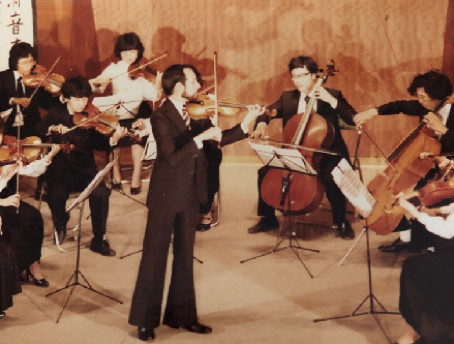
Graduation recital, June 11, 1982
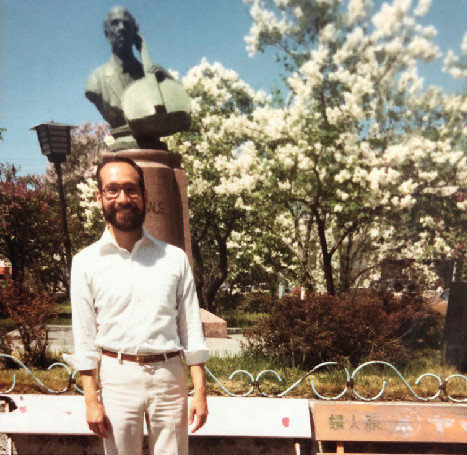
Casals Park

Monday concert
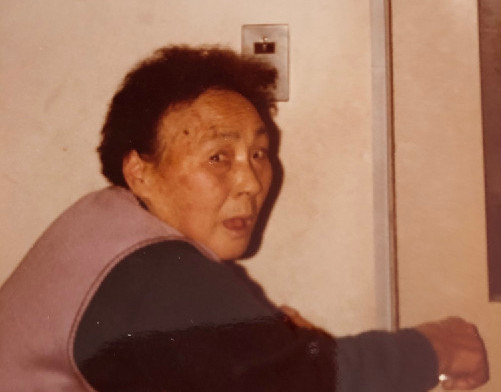
Obasan custodian at Daikon

Pino, Dr. Hermann, Dr. Suzuki

Letter from Frau Suzuki

Plate by gaijin mailbox in the kaikan lobby
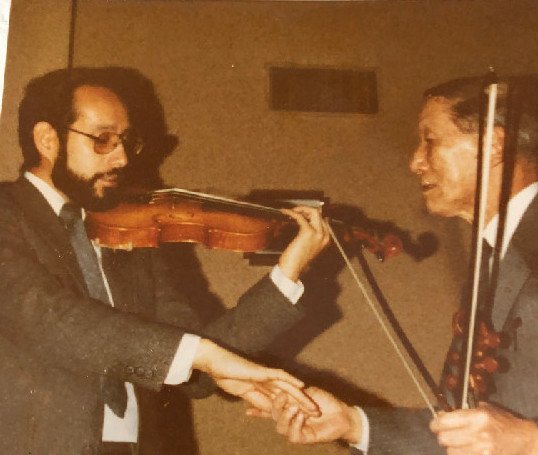
Lesson with Dr. Suzuki

Dr. Suzuki at Monday concert
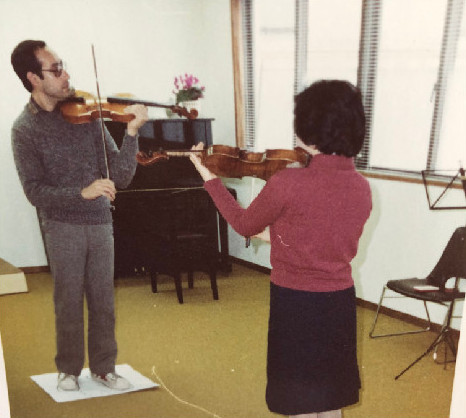
Lesson with Mori Sensei

